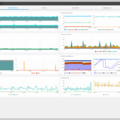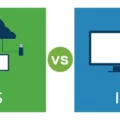Data encryption solutions are becoming increasingly important for businesses to protect their data from unauthorized access and malicious attacks. With the rise of cyber-attacks, it is vital for companies to implement strong data encryption solutions to prevent data loss and protect sensitive information. Data encryption solutions are an effective way to keep your data safe and secure.
Data encryption is a process of transforming data into a form that is unreadable by anyone except those who have the access key or password. Encryption works by transforming plain text into cipher text through an algorithm known as a cipher, which is applied to the original data. The results of this transformation are known as encrypted data.
There are 4 main types of encryption systems: Advanced Encryption Standard (AES), Triple DES, Blowfish, and Rivest-Shamir-Adleman (RSA). These different types of encryptions use different algorithms which all produce a different cipher text. AES is the most widely used system for encrypting large amounts of data, while Triple DES and Blowfish are both used for small blocks of data. RSA is typically used for digital signatures and secure key exchanges.
The most common type of encryption solution is the public key, also known as asymmetric encryption. This type uses two keys – one public key that can be shared with anyone who needs it and one private key that must remain secret. With this type of solution, each user has their own pair of keys which allows them to securely send messages or files to each other without having to share any confidential information with third parties.
Another method is symmetric encryption which uses only one private key between two parties in order to encrypt and decrypt messages or files securely. Symmetric encryption can provide faster performance than public key solutions but requires more trust between the two parties involved in order to keep the private key secure from third parties.
Database encryption is also available for businesses that need an extra layer of security when storing sensitive information within their databases. There are several types of database encryption such as transparent encryption, column-level encryption, and symmetric encryption that can be used depending on what kind of protection you need for your database.
Data security should be a top priority for any business – regardless if it’s an online business or an offline business dealing with physical products or services – so implementing strong security measures such as using reliable data encryption solutions should be at the top of any business’s list when it comes to protecting sensitive information from unauthorized access or malicious attacks.

The Four Most Secure Encryption Techniques
1. Advanced Encryption Standard (AES): AES is the most widely used and secure encryption technique today. It is a symmetric-key algorithm, meaning the same key is used for both encryption and decryption. AES supports key sizes of 128, 192, and 256 bits, making it incredibly secure. AES uses a substitution-permutation network to encrypt data, which makes it very difficult to break without the right key.
2. Hash-based Message Authentication Code (HMAC): HMAC is an authentication technique that combines a cryptographic hash function such as SHA with a secret key. The secret key is used to authenticate the message and ensure that it has not been modified in transit. HMAC is extremely secure since it requires both the sender and receiver to possess the same secret key in order for authentication to occur successfully.
3. Elliptic Curve Cryptography (ECC): ECC is an asymmetric encryption technique that uses elliptic curves over finite fields to generate public/private keys for encrypting data. ECC provides higher security than traditional RSA encryption due to its shorter keys and faster performance when compared with RSA of equal strength.
4. Perfect Forward Secrecy (PFS): PFS ensures that even if someone obtains access to your private keys, they won’t be able to decrypt messages sent in the past or future messages sent after the breach occurred. This is achieved by creating new keys for each session or communication exchange between two parties, meaning no single key can be used to decrypt all communications between them.
The Best Method for Data Encryption
The best way to encrypt data is to use a combination of public key and private key encryption. Public key cryptography, also known as asymmetric encryption, uses two keys – a public key and a private key. The public key is used to encrypt data, while the private key is used to decrypt it. This makes it virtually impossible for anyone who does not have a private key to access the encrypted data. Private key cryptography, or symmetric encryption, uses one single key for both encryption and decryption. This type of encryption is faster than public-key cryptography, but it requires that both parties have access to the same secret key in order for data transmission to be secure.
For maximum security, it’s best to use a hybrid method where both public and private keys are used together in order to encrypt and decrypt data. This approach allows for secure communication between two parties without having to share a secret key. It also provides an additional layer of protection since even if someone were able to obtain the public or private keys, they would still not be able to decrypt the data without having both sets of keys.
Common Database Encryption Methods
The three most common methods of database encryption are transparent encryption, column-level encryption, and symmetric encryption.
Transparent encryption is a method of encrypting stored data at the database level. This means that the data is encrypted when it is written to the database and decrypted when it is read from the database. This ensures that all sensitive data is secure and prevents unauthorized access.
Column-level encryption allows for each column within a database table to have its own unique decryption key. This ensures that only specific columns can be accessed by authorized personnel and prevents malicious actors from accessing sensitive information.
Symmetric encryption uses one private key to decrypt data retrieved from the database. This key is shared between both the sender and recipient, ensuring that only authorized parties can decrypt the data. It also provides an additional layer of security by preventing outsiders from accessing the information without authorization.
Types of Encryption Devices
The three main types of encryption devices are symmetric encryption, asymmetric encryption, and hash functions. Symmetric encryption uses the same key for both encrypting and decrypting data. Examples of symmetric encryption algorithms include Advanced Encryption Standard (AES) and Data Encryption Standard (DES). Asymmetric encryption, also known as public-key cryptography, uses one key for encrypting data and a different key for decrypting it. Examples of asymmetric encryption algorithms include RSA and Elliptic Curve Cryptography (ECC). Hash functions are used to generate a unique output from a given input, such as a password or file. Common hash function algorithms include Message Digest 5 (MD5) and Secure Hash Algorithm 1 (SHA-1).
The Strongest Data Encryption Available
The strongest data encryption available today is AES 256-bit encryption. It is a symmetric encryption algorithm that uses a 256-bit key to encrypt and decrypt data. This means that the same key is used for both encryption and decryption, making it more secure than asymmetric encryption algorithms which require two keys to function. AES 256-bit encryption is an extremely robust form of security, as it would take billions of years for even the most powerful computers to crack the code. It is also used by many governments and organizations around the world due to its highly secure nature.
The Most Widely Used Encryption Method and Its Popularity
Public key encryption is the most widely used type of encryption today because of its ability to securely transmit data without the need to distribute keys. Public key encryption works by using two distinct keys, a public key, and a private key. The public key is available to everyone, while the private key remains secret and is known only to the owner. When data is encrypted with the public key, it can only be decrypted with the corresponding private key. This makes it extremely difficult for hackers or other attackers to gain access to sensitive information, as they would need access to both keys in order to decrypt it. Additionally, public key encryption provides a high level of security and privacy compared to other types of encryption methods.
The Most Unbreakable Encryption
The most unbreakable encryption is the one-time pad. It is an encryption system that uses a randomly generated key of the same length as the plaintext message. The key is then used to encrypt the message and can only be decrypted with the exact same key. This makes it virtually impossible for anyone to decrypt the message without having access to the original key.
The one-time pad has been proven mathematically unbreakable, as long as two conditions are met: 1) that the keys are truly random, and 2) that each key is used only once. However, due to its impracticality, it is not widely used in practice. In order to securely exchange one-time pads without them being compromised, both parties must have a secure channel of communication (such as face-to-face or over an encrypted connection). Therefore, while it is theoretically unbreakable, it can be difficult to set up and use in practice.
Encrypting Data in a Database
Encrypting data in a database involves setting up the appropriate security measures to protect the data from unauthorized access. This typically includes using encryption algorithms to scramble the data into an unreadable format, as well as using authentication methods such as passwords and biometric scanning to restrict access to authorized users. It is also important to have security protocols for handling and storing encrypted data, as well as periodic reviews of the system’s security policies. Additionally, it is important to regularly back up data in case of a system failure or attack.
Common Forms of Encryption for Data Security in the Cloud
The two common forms of encryption for data security in the cloud are symmetric encryption and asymmetric encryption. Symmetric encryption, also known as private key encryption, uses the same key to both encrypt and decrypt data. This key must remain secret and is shared between the sender and receiver of the data. Asymmetric encryption, also known as public key encryption, uses a pair of keys – one public and one private – to encrypt and decrypt data. The public key is available to anyone who wishes to send an encrypted message while the private key remains secret with only the intended recipient having access to it. Both forms of encryption are important for ensuring that sensitive information stored in the cloud remains secure.
The Latest Encryption Technology
The latest encryption technology is the Advanced Encryption Standard (AES). AES is a symmetric key cipher that uses a 128-bit, 192-bit, or 256-bit key for encryption and decryption. It was developed by the US National Institute of Standards and Technology (NIST) as a successor to the DES cipher. AES offers strong security, with the 256-bit key offering the highest level of security available today. AES can be used in both hardware and software applications and is widely used for data encryption across many industries, including government, banking, healthcare, and more. Additionally, AES is also used to protect data transmissions over wireless networks such as Wi-Fi and Bluetooth.
Example of Data Encryption
Data encryption is the process of transforming plaintext into ciphertext, which is unreadable to anyone but the intended recipient. An example of data encryption would be a secure website that requires users to enter a password before being able to access an account. When the user enters their password, the website encrypts the information using a cryptographic algorithm, making it impossible for anyone else to access the account without knowing the password. Another example is when banks use encryption technology to protect customer data when it is transferred over the internet. This ensures that only authorized personnel can view sensitive financial information, such as account numbers and credit card numbers.
Understanding How Data Encryption Works
Data encryption is an important tool used to protect sensitive data from unauthorized access. It works by encoding plaintext into ciphertext, which is a type of coded language that can only be decoded with the use of a decryption key. The encryption and decryption keys are generated by cryptographic algorithms, which are mathematical models that use complex calculations to turn plaintext into ciphertext. In order for someone to understand the data, both the encryption and decryption keys must be known.
When data is encrypted, it is transformed into an unreadable code or format. This means that even if the data is intercepted or stolen, it can’t be read without the proper decryption key. By encrypting data before sending it over networks or storing it in databases, you can ensure that your information remains secure and confidential.
Conclusion
In conclusion, data encryption solutions are essential for protecting sensitive information. They offer a variety of different methods, such as the Advanced Encryption Standard (AES), Triple DES, Blowfish, and Rivest-Shamir-Adleman (RSA). The two most widely used encryption methods are public key (asymmetric) encryption and private key (symmetric) encryption. Additionally, there are different database encryption solutions available, such as transparent encryption, column-level encryption, and symmetric encryption. By properly utilizing data encryption solutions, organizations can ensure that their confidential data remains secure from malicious parties.








